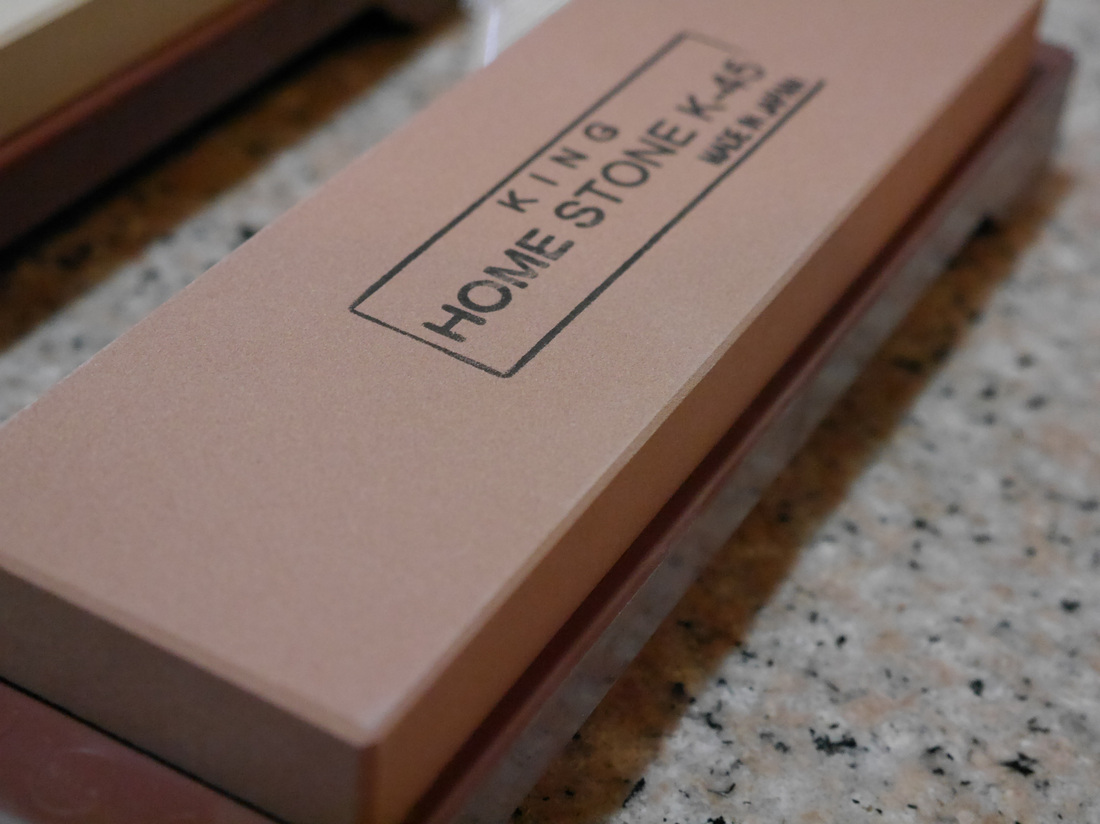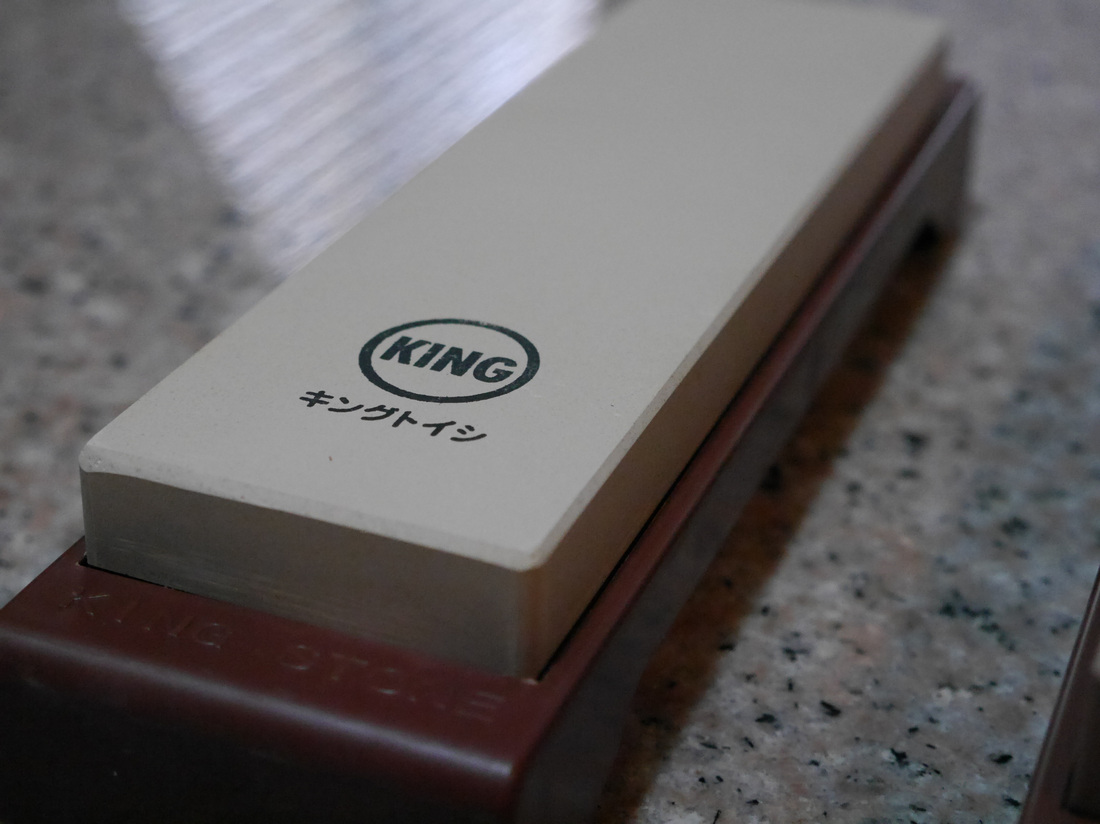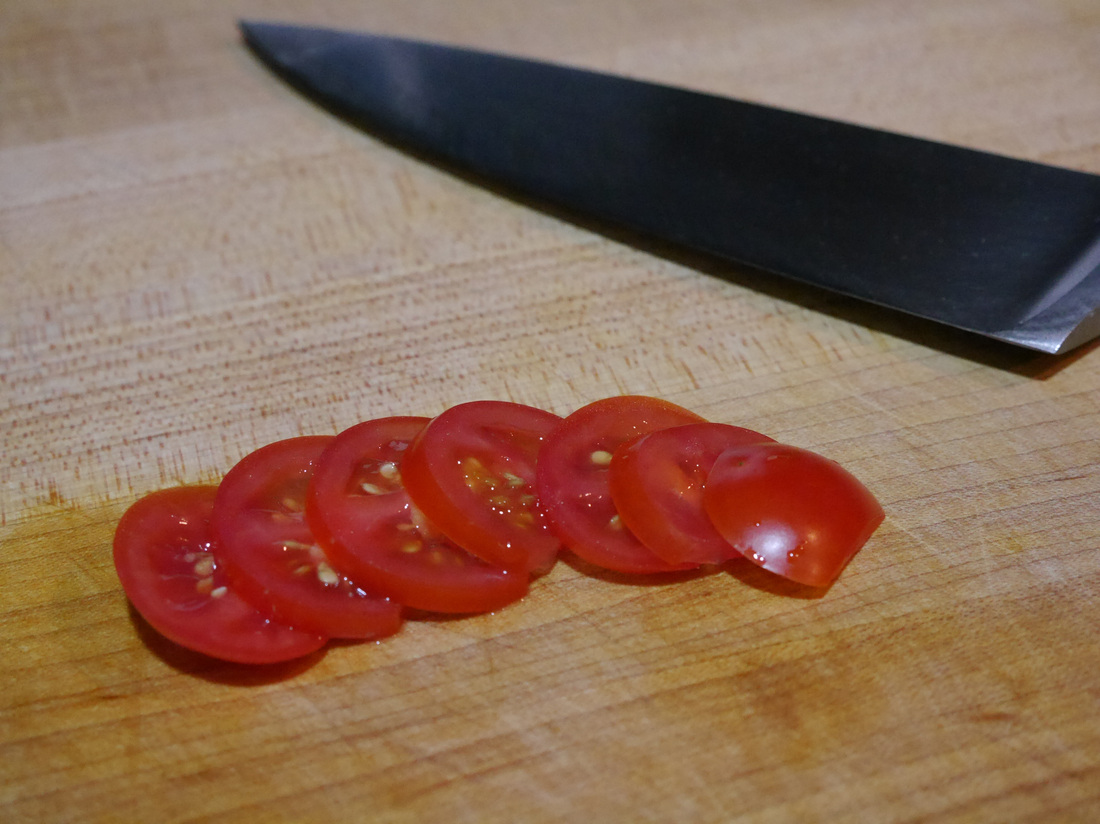Thought for the day: a dull knife is a dangerous knife. If it’s not sharp enough to pierce whatever it is you’re cutting, it may slip off the side and cut you instead. There will be several blog posts in the next week or two that cover basic knife skills (with videos, recipes, and pictures included), but I could not in good conscience provide this information without first touching upon the great importance of using a properly sharpened knife.
You’re probably asking yourself questions such as: “There are so many sharpening options out there, so how do I choose one? What is the best way to sharpen a knife, prolong its life, and maintain that wicked sharp edge? How often should a knife blade be sharpened? How do I know if the blade is sharp? How much is this going to cost me? Would Crocodile Dundee think my knife is worthy of being called a knife?” Don’t worry, I’ve got the answers (and a couple helpful videos and links) to all those questions and more below.
With all the options available, choosing a sharpening method can be a daunting task. So which one is most effective? Watch the following video for a full breakdown of your options:
Let me guess...you thought the best method was going to involve the coffee mug? Sorry to disappoint, although that IS a nice Fiscally Fit option and awfully handy when nothing else is available. The truth of the matter is that whetstones (in this case, Japanese water stones) are far and away the best option for sharpening your knives to that desirable razor-sharp edge. Another option would be taking them to a professional sharpener, but this will most likely set you back a minimum of $50 per trip and, for most home cooks, sharpening is a once or twice a year activity. The ceramic sharpening rod is excellent for maintaining a sharp edge for extended periods of time in between sharpenings and keeps the edge balanced, so think of this and the whetstones as complementary tools.
NOTE – I will receive a small percentage for purchases made through the following Amazon links, but did purchase all except the dual-sided stone myself and do actively use each of these items on a regular basis. A 1000 grit Japanese water stone, a 6000 grit Japanese water stone, and a ceramic sharpener were used to obtain the desired sharpness on my knife. You can also go with a very convenient two-sided 1000/6000 grit Japanese water stone. These three (or two, if you opt for the double-sided option) items are all you need to achieve an exceptionally sharp knife blade and they should last for quite a long time with regular maintenance.
Dual-stage and electric sharpeners are not effective and the duration of sharpness they provide is negligible. You’re also taking off entirely too much steel when you use an electric sharpener. With a $200 price tag, you’d expect the sharpener to do a great job...not so much. Sharpening (honing) steels are okay, but they do not sharpen your knife, they just assist in maintaining a balanced edge and a sharp blade. The ceramic sharpening rod does all that a sharpening steel does, except even better, making the sharpening steel almost obsolete. It will actually sharpen the knife slightly, but is primarily a maintenance tool. Do not use ceramic sharpeners with extremely blunt knives – stick with a low grit whetstone for this task. Keep in mind that the ceramic sharpening rod should be longer than the knife you are sharpening.
Whetstones usually come from India, Arkansas, or Japan (water stones) and each works best with some form of lubrication (oil/water) applied prior to use. The water stones that I use require 10+ hours of soaking in water for the best results. Do not use oil with the water stones. They come in varying grits, with lower numbers signifying a coarser grit than high numbers. A 1000 grit stone is good for a blunt or well-used knife and a 6000 grit whetstone is ideal for creating a finishing polish and to create a razor sharp edge. In the following video, I show how to sharpen your knives with a whetstone:
As you saw in the video, sharpening your knives with whetstones is not difficult...it is simply time-consuming. Place a wet paper towel underneath the stone to prevent slippage, keep an approximate 20 degree angle and apply gentle downward pressure as you glide the blade across the stone’s surface an equal number of times in each direction, and just relax (more than I did when on camera in the videos, which shouldn't be too difficult). You should spend approximately 10 minutes running the blade back and forth across the 1000 grit stone and 5-6 more minutes on the 6000 grit stone. Rather than watching a clock, I do 100 repetitions on each side with the 1000 grit stone and follow this with 50 repetitions on each side using the 6000 grit stone. Finish with 4-5 swipes on each side of the ceramic sharpening rod to straighten out the finished edge. There should be a noticeably sharp and extremely polished, shiny (and who doesn't love shiny things?) edge on the blade.
Vegetables, fruits, and even meats will tremble at the mere sight of your newly manicured blade. Well, maybe. Speaking of fruits and vegetables, how do you know your knife is sharp enough? Try the tomato test from the video – slice a tomato as thinly as possible. There should be close to no friction when sliding it through, and this indicates that the blade is plenty sharp for just about any chopping task you can throw at it.
Summarizing what has been covered in this post (and consolidating answers to the questions stated in the beginning): a sharp knife is safer than a dull knife, whetstones are the optimal sharpening tools, ceramic sharpening rods are optimal blade-maintainers, everything else isn’t worth your time/effort/money, blades should be sharpened 1-2 times a year, the tomato test is how you test the sharpness of the blade, and YES...Crocodile Dundee would be proud of your whetstone-sharpened knife!





 RSS Feed
RSS Feed